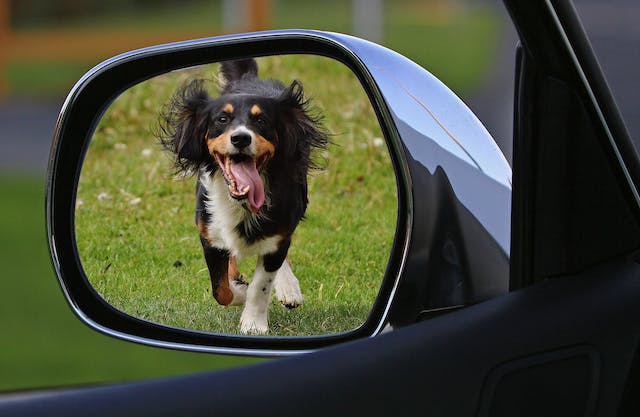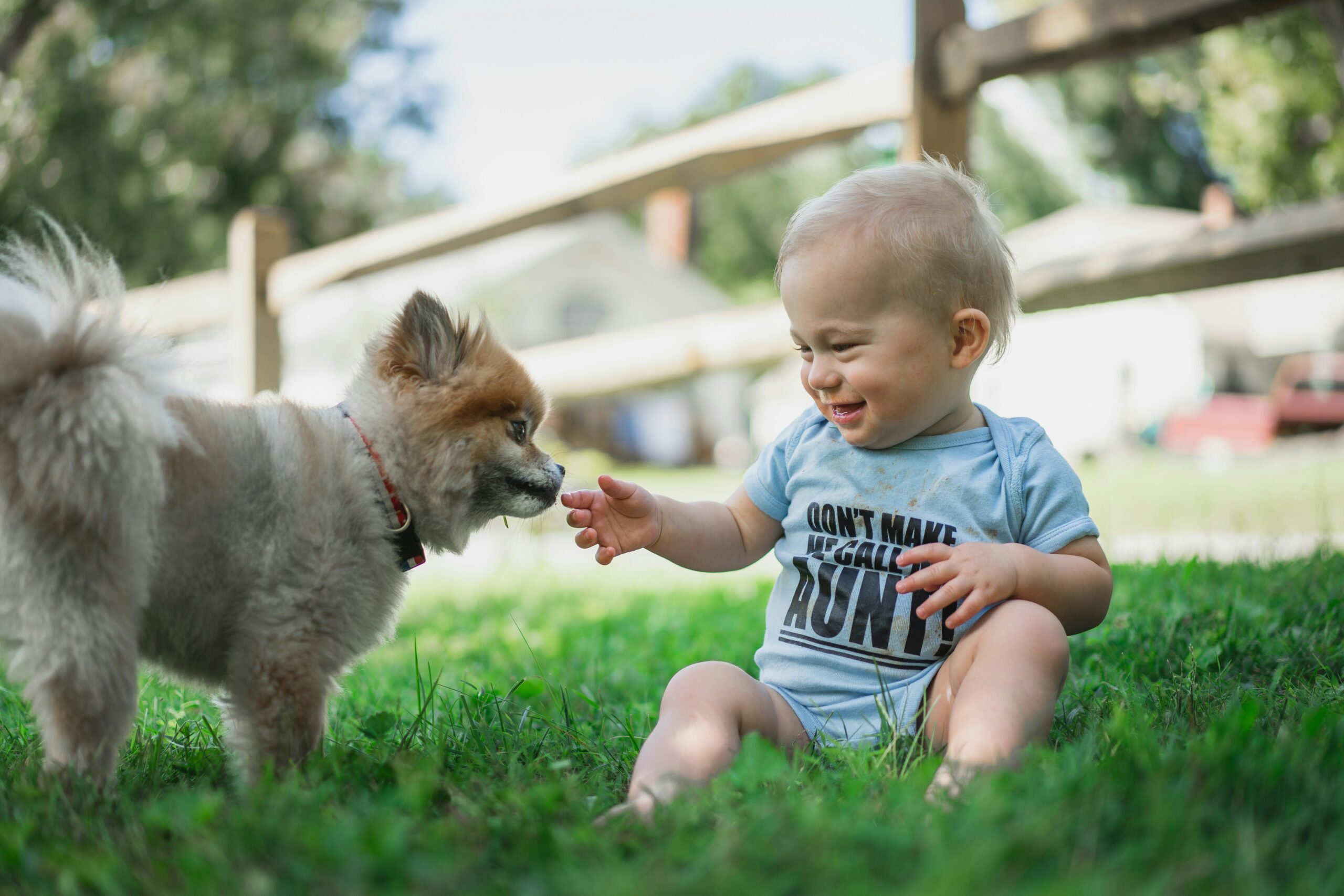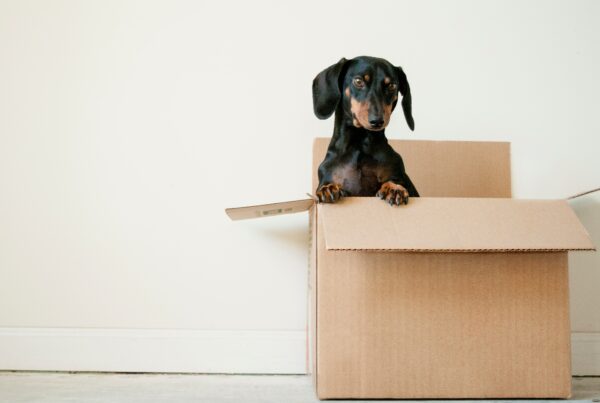If you are a dog parent or a lawn owner, you may have noticed that your furry friend’s pee can leave unsightly yellow or brown patches on your lawn. This can be frustrating, especially if you take pride in having a green and healthy grass.
But why does dog urine kill grass? And more importantly, how can you prevent it from happening? In this blog post, we will answer these questions and give you some tips on how to stop dog urine from burning your lawn.
Why Does Dog Urine Kill Grass
Dog urine is not inherently harmful to grass. In fact, it contains some nutrients, such as nitrogen, that can actually benefit the soil and the plants. However, the problem is that dog urine is highly concentrated and acidic, which means that it can overload the grass with too much nitrogen and lower the pH of the soil. This can cause the grass to burn and die, leaving behind yellow or brown spots.
The severity of the damage depends on several factors, such as the size and breed of your dog, the frequency and volume of their urination, the type and condition of your grass, and the weather and soil conditions. Some dogs, especially large ones, produce more urine and have higher levels of nitrogen in their pee.
Some grasses, such as Kentucky bluegrass and Bermuda grass, are more sensitive to urine than others, such as fescue and perennial ryegrass. Some weather and soil conditions, such as hot and dry weather and alkaline soil, can also make the grass more susceptible to urine burn.
For dogs who frequently urinate on artificial turf or fake grass, a best artificial grass cleaner for dog urine can help remove the urine and prevent damage.
Effective Ways to Stop Dog Urine From Killing Grass
Now that we know the causes of dog urine damage to grass, let’s look at some of the effective ways to stop it and improve the condition of our lawns. There are several methods that can help prevent or reduce dog urine damage to grass, such as watering, training, diet, supplements, and lawn care. Each method has its own advantages and disadvantages, and you may need to try different combinations to find what works best for your lawn and your dog. Here are some of the main methods and how they work:
- Watering: Watering is one of the simplest and most effective ways to stop dog urine from killing grass. Watering dilutes the concentration of nitrogen and other substances in dog urine and flushes them out of the soil, reducing the risk of burning the grass. Watering also helps maintain the soil moisture and pH level, which are essential for the grass growth.
To use this method, you need to water the spot where your dog urinated as soon as possible, preferably within 8 hours, using a hose or a sprinkler. You can also encourage your dog to drink more water, which will help dilute the urine and reduce the frequency and volume of urination.
The benefits of watering are that it is easy, cheap, and natural, and it does not affect the health or behavior of your dog. The drawbacks are that it may not be convenient or feasible to water the spot every time your dog urinates, especially if you have a large lawn or multiple dogs, and that it may increase your water consumption and bill.
- Training: Training is another effective way to stop dog urine from killing grass. Training involves teaching your dog to urinate in a designated area of your lawn or outside your lawn, such as on a gravel, mulch, or artificial turf patch, or on a fire hydrant, a tree, or a pole. This way, you can limit the exposure of your grass to dog urine and prevent the damage.
To use this method, you need to train your dog using positive reinforcement, such as treats, praise, or toys, whenever your dog urinates in the desired area. You also need to be consistent and patient, as it may take some time for your dog to learn and follow the new habit.
The benefits of training are that it is natural, safe, and long-lasting, and it can also improve the bond and communication between you and your dog. The drawbacks are that it may be challenging, time-consuming, and frustrating, especially if your dog is stubborn, old, or has a medical or behavioral issue.
As a side note, if you’re looking for information on “how to keep a diaper on a dog,” it’s important to note that using diapers can be an alternative solution for dogs with incontinence issues or other situations where controlling urination is necessary. However, it’s a separate topic from training to prevent grass damage from dog urine.
- Diet: Diet is another important factor that can affect the amount and quality of dog urine and its impact on the grass. Diet can influence the nitrogen content, pH level, frequency, and volume of dog urine, and thus the extent of the damage. By changing or adjusting your dog’s diet, you can reduce the harmful effects of dog urine on the grass. To use this method, you need to consult your veterinarian and follow their advice on what and how much to feed your dog.
Some general tips are to avoid feeding your dog too much protein, as it can increase the nitrogen content of the urine, to add some fruits and vegetables to your dog’s diet, as they can help balance the urine pH and provide antioxidants and fiber, and to avoid feeding your dog salty or spicy foods, as they can increase the thirst and urination of your dog.
The benefits of diet are that it is natural, healthy, and holistic, and it can also improve the overall well-being of your dog. The drawbacks are that it may be costly, complicated, and restrictive, and it may not work for every dog or every lawn.
- Supplements: Supplements are another option that can help stop dog urine from killing grass. Supplements are products that are added to your dog’s food or water, or given directly to your dog, that claim to reduce the nitrogen content or pH level of dog urine, or to enhance the grass growth and resistance.
There are many types of supplements available on the market, such as tablets, powders, liquids, or granules, and they may contain ingredients such as amino acids, vitamins, minerals, enzymes, probiotics, or herbs. To use this method, you need to follow the instructions and dosage of the product and monitor your dog’s reaction and results.
The benefits of supplements are that they are convenient, easy, and fast, and they may work for some dogs and lawns. The drawbacks are that they may be expensive, ineffective, or harmful, and they may have side effects or interactions with your dog’s health or medication.
- Lawn care: Lawn care is another essential aspect that can help stop dog urine from killing grass. Lawn care involves taking good care of your lawn and making it more resilient and tolerant to dog urine damage. There are several steps that you can take to improve your lawn care, such as choosing the right type of grass, fertilizing, mowing, aerating, overseeding, and repairing.
To use this method, you need to research and apply the best practices for your lawn and your climate. Some general tips are to choose a type of grass that is more resistant to dog urine damage, such as fescue, ryegrass, or Bermuda grass, to fertilize your lawn moderately and regularly, as too much or too little fertilizer can make your grass more susceptible to burning, to mow your lawn at a proper height, as too short or too long grass can affect the soil moisture and temperature, to aerate your lawn periodically, as it can improve the soil drainage and oxygenation, to overseed your lawn seasonally, as it can fill in the bare spots and increase the grass density, and to repair your lawn promptly, as it can prevent the damage from spreading and worsening.
The benefits of lawn care are that it is natural, effective, and long-term, and it can also enhance the beauty and value of your lawn. The drawbacks are that it may be labor-intensive, time-consuming, and costly, and it may require some expertise and equipment.
How to Repair Dog Urine Spots on Your Grass
If your lawn already has some dog urine spots, don’t worry, there are some ways to repair them and restore your grass. Here are some of the steps you can take:
- Remove the dead grass. You can use a rake, a shovel, or a knife to remove the dead grass and the top layer of the soil from the affected area. This can help remove the excess nitrogen and salts from the soil and prepare the area for new grass growth.
- Neutralize the soil. You can use a soil test kit to check the pH of the soil in the affected area. If the soil is too alkaline, you can use a product that lowers the pH, such as sulfur, iron sulfate, or aluminum sulfate. If the soil is too acidic, you can use a product that raises the pH, such as lime, wood ash, or dolomite. You should follow the instructions on the product label and apply the product evenly over the area.
- Add some compost or topsoil. You can use a shovel or a trowel to spread some compost or topsoil over the area. This can help add some organic matter and nutrients to the soil and improve its texture and drainage. You should use a thin layer of compost or topsoil, about an inch thick, and avoid covering the existing grass completely.
- Reseed or sod the area. You can use a rake or a hand to sprinkle some grass seeds over the area. You should choose a grass type that matches your existing lawn and is resistant to urine burn, such as fescue or perennial ryegrass. You should also choose a grass seed that is suitable for your climate and soil conditions. You should water the area lightly and frequently, until the seeds germinate and establish.
Alternatively, you can use a knife or a scissors to cut some sod pieces that fit the area. You should choose a sod type that matches your existing lawn and is resistant to urine burn, such as fescue or perennial ryegrass.
You should also choose a sod type that is suitable for your climate and soil conditions. You should press the sod pieces firmly into the soil and water the area deeply and regularly, until the sod roots and blends with the existing lawn.
How to Train Your Dog to Pee in a Designated Area
One of the best ways to prevent dog urine from killing your grass is to train your dog to pee in a designated area. This can help you avoid the hassle of repairing your lawn and save you time and money. Here are some tips on how to train your dog to pee in a specific spot:
- Choose a suitable spot. You should choose a spot that is away from your lawn and other plants, such as a gravel, mulch, or sand area. You should also choose a spot that is easy to access and clean, such as a corner or a side of your yard. You should avoid choosing a spot that is too close to your house, your neighbor’s house, or the street, as this can cause odor and sanitation problems.
- Mark the spot. You can use a fence, a border, a sign, or a flag to mark the spot and make it visible and attractive to your dog. You can also use some of your dog’s urine or feces, or a product that mimics the scent of urine or feces, to mark the spot and make it appealing to your dog. You should avoid using a product that contains ammonia, as this can confuse your dog and make them think that the spot is already occupied by another dog.
- Take your dog to the spot. You should take your dog to the spot every time they need to pee, such as after waking up, after eating, after playing, or before going to bed. You should use a leash, a collar, or a harness to guide your dog to the spot and prevent them from wandering off. You should also use a cue word, such as “pee”, “potty”, or “go”, to signal your dog to pee in the spot. You should be consistent and patient with your dog, as it may take some time for them to learn the new habit.
- Reward your dog. You should praise your dog and give them a treat, a toy, or a play session every time they pee in the spot. You should also avoid scolding or punishing your dog if they pee elsewhere, as this can make them fearful and confused. Instead, you should calmly interrupt them and take them to the spot, and reward them if they finish peeing there. You should reinforce your dog’s positive behavior and make them associate the spot with something good.
- Maintain the spot. You should keep the spot clean and odor-free, as this can encourage your dog to use it again. You should remove any feces and rinse the spot with water regularly. You can also use a product that neutralizes the urine odor, such as vinegar, baking soda, or enzyme cleaner. You should avoid using a product that contains bleach, as this can harm your dog and the environment.
Well, That’s a Wrap
Dog urine can kill your grass, but it doesn’t have to. By following the tips we have shared in this blog post, you can prevent dog urine from burning your lawn, repair any existing damage, and train your dog to pee in a designated area.
This way, you can keep your dog and your grass happy and healthy. Remember, your dog is not doing it on purpose, they are just following their natural instincts. With some understanding and guidance, you can help your dog adapt to your lawn and enjoy your outdoor space together.
photo credit: Photo by Pixabay: https://www.pexels.com/photo/tricolor-short-coat-dog-running-160738/
Did you find this city dog content helpful? Share it with a friend or link it to social media. Enjoy short clips of silly dogs? Best dog training videos? Holistic puppy training tips? Follow us on instagram @nydognanny or on YouTube at nydognanny. Have some news you needs to get to dog and cat parents stat? Email info@newyorkdognanny.com with your article pitch.




